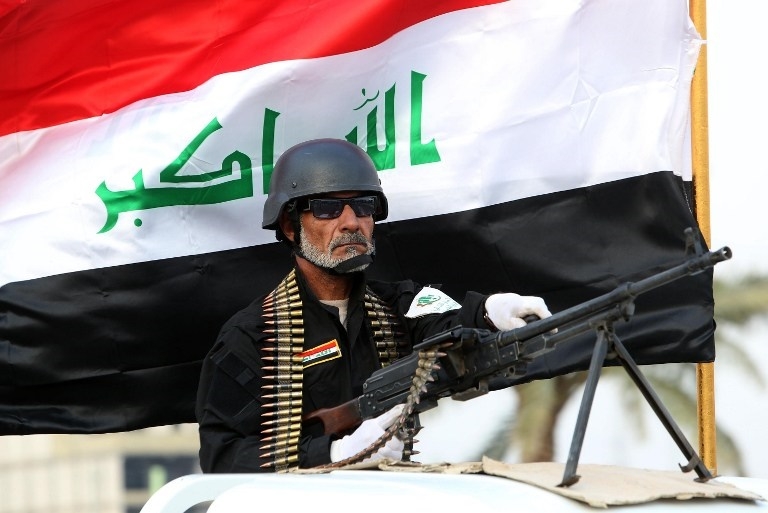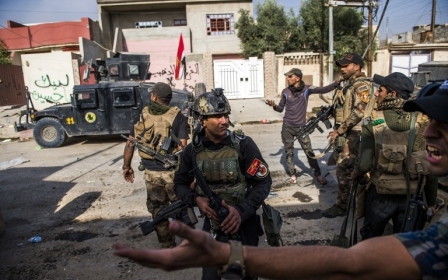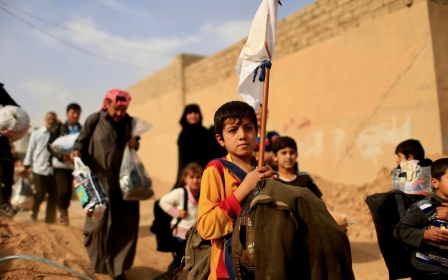Mosul latest: Iraqi militias take Tal Afar air base

Iraqi paramilitary forces announced Wednesday that they had entered the Tal Afar airport west of Mosul and were fighting to clear pockets of Islamic State group militants inside it.
The airport is located some six kilometres (four miles) south of the town of Tal Afar, the ultimate target of an operation billed as an attempt to cut off IS in Mosul from territory they control farther west.
Fighting towards Tal Afar has so far been the main task for the Hashed al-Shaabi, an umbrella organisation for pro-government paramilitaries that is dominated by Iran-backed Shiite militias, in the massive operation aimed at recapturing Mosul that was launched on 17 October.
"An operation to pursue pockets of (IS) hiding inside the airport is happening now," Hashed al-Shaabi spokesman Ahmed al-Assadi said in a statement.
The airport will be "a launch point for Hashed al-Shaabi forces to liberate the centre of the Tal Afar district, and cut the last (IS) supply lines between Mosul and Tal Afar," Assadi said.
Hashed forces have been pushing their way toward Tal Afar from starting points south of Mosul for more than two weeks, retaking a series of villages from IS along the way.There has been opposition both inside and outside Iraq to the idea of Shiite militia forces, which have been repeatedly accused of rights violations against Sunnis, being involved in the battle for predominantly Sunni Arab Mosul.
The Hashed push for Tal Afar, which had a Shiite majority prior to being seized by IS in 2014, gives these forces a role in the battle but so far only federal forces have entered the city.
IS seized Mosul along with swathes of other territory in June 2014, but Iraqi forces have since regained much of the areas they lost two years before, and the city is now the country's last major population centre still in militant hands.
The Hashed al-Shaabi, which was established in June 2014 but includes militias that were founded years earlier, played a major role in halting the initial IS offensive and later in pushing the militants back, and is widely admired among Iraq's Shiite population.
But while the Iraqi government continues to make gains towards Mosul, rights groups have accused Iraqi security forces of killing and torturing civilians south of Mosul.
Amnesty International said "up to six" people were found dead last month in the Shura and Qayyara sub-districts - the six were suspected by security forces of having ties to the ultra-hardline militant group that seized a third of Iraqi territory in 2014.
"Men in federal police uniform have carried out multiple unlawful killings, apprehending and then deliberately killing in cold blood residents in villages south of Mosul," said Lynn Maalouf, deputy director for research at Amnesty's Beirut office.
Human Rights Watch (HRW) said at least 37 men suspected of being affiliated with Islamic State had been detained by Iraqi and Kurdish forces from checkpoints, villages, screening centres and camps for displaced people around Mosul and Hawija, further south.
IS mass grave
Meanwhile, Human Rights Watch reported Thursday that Iraqi security forces discovered a mass grave on 7 November, which most likely contains the bodies of at least 300 former local police officers executed by IS.
The bodies in the grave, 30 kilometers southeast of Mosul, appeared to be of men killed in custody reported HRW.
Witnesses told the NGO they believe IS had massacred several hundred former policemen they had been holding as prisoners in late October.
“This is another piece of evidence of the horrific mass murder by ISIS of former law enforcement officers in and around Mosul,” said Joe Stork, deputy Middle East director at Human Rights Watch. “ISIS should be held accountable for these crimes against humanity.”
According to HRW who visited the site of the mass grave on the outskirts of the village of Hammam al-Alil on 12 November, a report by an Iraqi government stated that the grave housed about 100 corpses, with at least 20 visible from the surface. It found, based on the visible corpses’ level of decomposition that the individuals had been killed within the previous three weeks. All the visible corpses had bound hands and ankles and were blindfolded.
New MEE newsletter: Jerusalem Dispatch
Sign up to get the latest insights and analysis on Israel-Palestine, alongside Turkey Unpacked and other MEE newsletters
Middle East Eye delivers independent and unrivalled coverage and analysis of the Middle East, North Africa and beyond. To learn more about republishing this content and the associated fees, please fill out this form. More about MEE can be found here.





